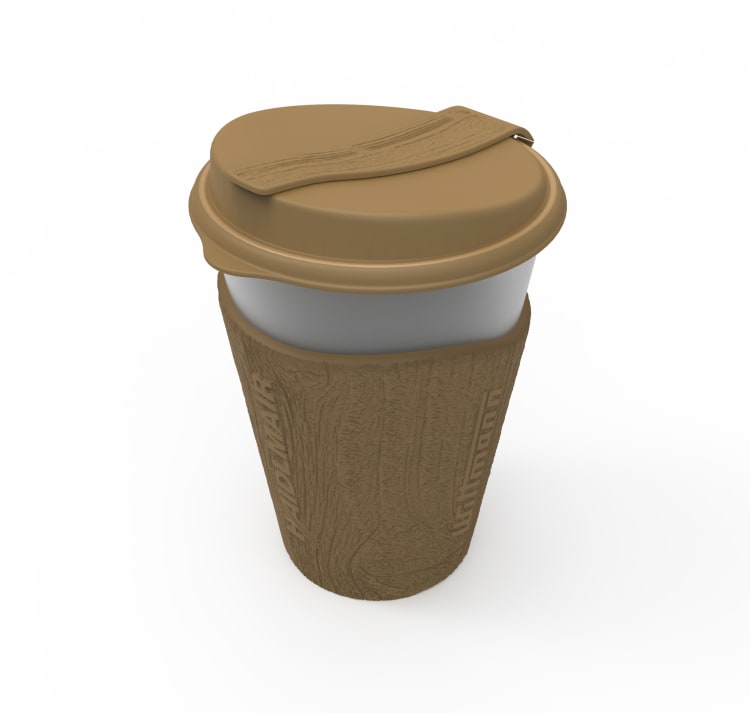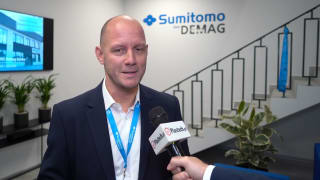
Circular economy, digitization and climate protection - the hot topics of this year’s K fair are also the hot topics of the Wittmann Group’s machinery presentation. With applications shown at the Wittmann Battenfeld booth C06 in hall 15, at the VDMA Circular Economy Forum, at booth CE10 in the outdoor area, and more equipment presented at the booth of Wittmann Technology as well as several booths of other exhibitors, Wittmann Battenfeld will give visitors to the K fair insights into its extensive range of ultra-modern, resource-saving technologies.
Under the motto of “It’s all Wittmann”, Wittmann Battenfeld will present its machinery and equipment at this year’s K fair for the first time in the new Wittmann design, thus demonstrating even more clearly than before the Wittmann Group’s competence as a single-source supplier of complete injection molding systems, which includes not only the machine but also automation and auxiliary equipment with the option of Wittmann 4.0 integration. It’s all Wittmann also means latest application technology targeting highest quality standards and functionality combined with the smallest possible CO2 footprint.
The trade fair highlight - EcoPower operating with direct current generated from sources of renewable energy.
Solar cells on corporate roofs offer companies the possibility to generate their own electricity and thus not only to save costs but simultaneously protect the environment. An answer has been found by Wittmann Battenfeld together with its customer WAGO to the question of how the continuous current generated by solar cells can be used directly for driving injection molding lines, without loss by first passing through inverters, transformers and high-voltage power lines.
By way of a conceptual study using a machine from its all-electric EcoPower series, Wittmann Battenfeld has demonstrated the solution and applied for a patent jointly with WAGO. On an EcoPower 180/750+ operating with direct current, a part for the customer’s “basic clamp” is produced from flame-retardant polyamide with a 24-cavity mold supplied by WAGO. The parts are removed by a modified WX142 robot from Wittmann in a DC version powered directly via the intermediate DC circuit of the EcoPower, and which also returns any excess energy set free by axis deceleration to the intermediate circuit.
This concept not only enables energy costs to be kept down by direct use of solar electricity, but direct current is also easy to store in conventional batteries, thus providing an excellent way to handle current peaks. If necessary, the machine can be changed over to AC operation.
The EcoPower 180 comes with the new B8X control system equipped with system components developed in-house. These enable a higher internal clock frequency, thus ensuring shorter response times to sensor signals and consequently higher reproducibility of parts, together with unchanged user-friendliness and the familiar visualization.
Energy-efficient and eco-friendly production with multi-component technology
Wittmann Battenfeld can draw on many years of experience in multi-component technology. At this year’s K fair, the company will demonstrate its expertise in this area by the production of a reusable 3-component coffee-to-go cup. This application will also show the advantages and quality improvement achieved by a combination of processes. In addition to multi-component technology, Cellmould structured foam technology will be used to reduce the material input.
In this application, a cup with a lid made of Bornewables from Borealis is manufactured on a servo-hydraulic SmartPower 400/750H/210S/525L Combimould with a rotary unit and a mold supplied by Haidlmair, Austria. The Bornewables material made of renewable raw materials (i.e., non-petroleum-based feedstock) enables Borealis to meet the quality and sustainability standards required by Wittmann. The material is food- and dishwasher-safe as well as ISCC PLUS-certified (International Sustainability & Carbon Certification). The feedstock for making Borealis Bornewables originates from bio-mass, waste and residual substances of the second generation, which are not in competition with the human food chain. Product safety and performance features are on a par with those of modern polyolefins, with a simultaneous significant reduction of the CO2 footprint. The mold from Haidlmair is laid out optimally for processing Bornewables material. A special feature of this mold is the use of hybrid elements in the mold plate to optimize cooling. These hybrid elements are manufactured by Haidlmair directly on a laser tech machine in one production step from a combination of conventionally processed tool steel with 3D-printed yellow bronze.
The cup produced in clear optic in the first cavity is over-molded in the second cavity with a shell and provided with an additional insulating effect by foaming the melt with Cellmould technology. The shell consists of a Bornewables PP blend with adequate surface attributes for a firm grip. The lid for the cup is injection-molded in an adjacent cavity. It consists of the same material as the main body, but can be individually colored thanks to the special mold technology. The choice of materials was made to suit the cup’s function and give it a clear optical appearance. So, the entire cup is not only produced from Bornewables, but can also be both re-used and 100% recycled in line with the principle of circular economy. The parts are removed and deposited on a conveyor belt by a WX142 robot, then passed on to a flow wrapping machine and packaged. The packaging material used in this instance also comes from the Bornewables product family from Borealis.





